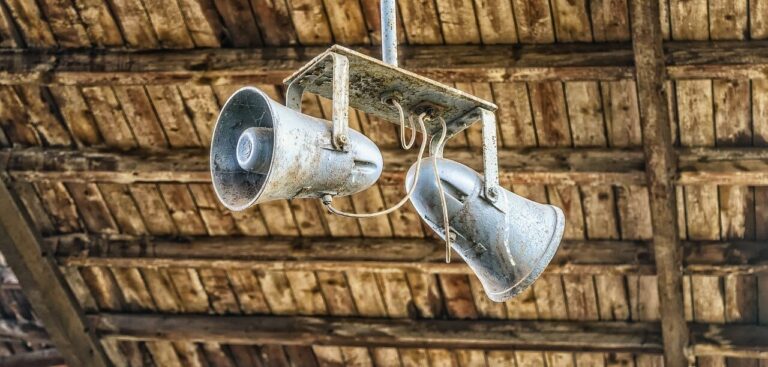A global initiative to ensure that everyone on Earth is protected by early warnings by 2027 is being fast-tracked into action on the ground.
António Guterres, UN secretary-general, has convened an advisory panel of leaders of UN agencies, multilateral development banks, humanitarian organizations, civil societies and insurance and IT companies to inject more political, technological and financial clout to ensure that the Early Warnings for All initiative becomes a reality.
Coordinated action will be increased in the coming months, initially in 30 particularly at-risk countries, including small island developing states (SIDS) and least developed countries (LDCs). Additional countries are expected to be added as the work with partners gathers pace, scale and resourcing.
Guterres said, “Now it is time for us to deliver results. Millions of lives are hanging in the balance. It is unacceptable that the countries and peoples that have contributed the least to creating the crisis are paying the heaviest prices. People in Africa, South Asia, South and Central America and SIDS are 15 times more likely to die from climate disasters. These deaths are preventable. The evidence is clear: early warning systems are one of the most effective risk reduction and climate adaptation measures to reduce disaster mortality and economic losses.”
In the past 50 years, the number of recorded disasters has increased by a factor of five, driven in part by human-induced climate change. If no action is taken, the number of medium- or large-scale disaster events is projected to reach 560 a year – or 1.5 each day – by 2030.
Half of countries globally do not have adequate early warning systems and even fewer have regulatory frameworks to link early warnings to emergency plans.
Prof. Petteri Taalas, WMO secretary-general, said, “The unprecedented flooding in Mozambique, Malawi and Madagascar from Tropical Cyclone Freddy highlights once again that our weather and precipitation is becoming more extreme and that water-related hazards are on the rise. The worst affected areas have received months’ worth of rainfall in a matter of days and the socio-economic impacts are catastrophic.
“Accurate early warnings combined with coordinated disaster management on the ground prevented the casualty toll from rising even higher. But we can do even better and that is why the Early Warnings for All initiative is the top priority for WMO. Besides avoiding damages, the weather, climate and hydrological services are economically beneficial for agriculture, air, marine and ground transportation, energy, health, tourism and various businesses,” he said.
WMO and the United Nations Office for Disaster Risk Reduction (UNDRR) are spearheading the Early Warnings for All initiative, along with the International Telecommunication Union (ITU) and the International Federation of Red Cross and Red Crescent Societies (IFRC).
Mami Mizutori, special representative of the Secretary-General for Disaster Risk Reduction and head of UNDRR, added, “The operationalization of this initiative is a clear example of how the UN System and partners can work together to save lives and protect livelihoods from disasters. Inclusive and multi-hazard early warning systems that close the ‘last mile’ are among the best risk reduction methods in the face of climate-related hazards and geophysical hazards such as tsunamis. Achieving this is not only a clear target in the Sendai Framework for Disaster Risk Reduction but a moral imperative as well.”
The Early Warnings for All initiative will require initial new targeted investments of US$3.1bn between 2023 and 2027. This is around 6% of the requested US$50bn in adaptation financing. It would cover strengthening disaster risk knowledge, observations and forecasting, preparedness and response, and communication of early warnings.
A range of new and pre-existing financing solutions are required to implement the plan, including scaling up the Climate Risk Early Warning Systems (CREWS) Initiative, the Systematic Observations Financing Facility (SOFF) and accelerated investment programs of climate funds, such as the Green Climate Fund (GCF) and the Adaptation Fund, and key Multilateral Development Banks (MDBs), as well as other innovative new financial instruments across all stakeholders of the early warning value chain.
The advisory panel meeting will consider advancing the four key Multi-Hazard Early Warning System (MHEWS) pillars:
- Disaster risk knowledge and management (US$374m): aims to collect data and undertake risk assessments to increase knowledge on hazards and vulnerabilities and trends. Led by UNDRR with support from WMO.
- Detection, observations, monitoring, analysis and forecasting of hazards (US$1.18bn). Develop hazard monitoring and early warning services. Led by WMO, with support from UN Development Programme (UNDP), UN Educational, Scientific and Cultural Organization (UNESCO) and UN Environment Programme (UNEP).
- Dissemination and communication (US$550m). Communicate risk information so it reaches all those who need it and is understandable and usable. Led by ITU, with support from IFRC, UNDP, and WMO.
- Preparedness and response (US$1bn): Build national and community response capabilities. Led by IFRC, with support from Risk Informed Early Action Partnership (REAP), Office for the Coordination of Humanitarian Affairs (OCHA), Food and Agriculture Organization (FAO), and World Food Programme (WFP).



